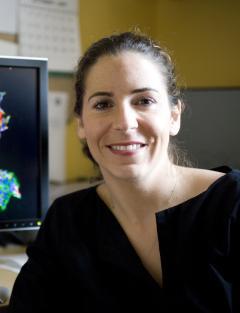The Charlotte Kuperwasser Lab
Exploring Breast Tissue Dynamics: From Development to Cancer
The Kuperwasser lab focuses on exploring the molecular mechanisms, cellular interactions, and microenvironmental factors that govern breast tissue development, regeneration, and cancer progression. Some of the major research interests include development of new model systems, understanding stromal-epithelial interactions, stem cells, and defining causes and drivers of cancer.
Organoid Technology and Tissue Modeling
One major area of focus in the lab is on the advancement of tissue engineering technologies for modeling normal tissue development and disease. A major effort has been developing and improving organoid methodologies that goes beyond simple self-assembly cultures and allow for the study of complex organogenesis, and stromal interactions. These models more effectively model the cellular dynamics of stem cells, differentiation, and tissue regeneration. Recently, we have developed advanced organoid models to simulate human breast tissue for better understanding tissue architecture, disease modeling, and hormonal effects on breast development. We integrate live imaging and real-time analysis with advanced computational methods to analyze and interpret complex bioimaging data. We have expanded this technology to other human tissues as well as diverse species thereby providing new approaches to studying regenerative medicine.
Fig 1. Advancing Tissue Models: Organoid Technology for Disease Modeling and Regenerative Medicine. Ex vivo human organoids that recapitulate human breast tissue anatomy – brightfield images of organoids, organoid expressing a GFP reporter construct, and organoids stained with lineage markers.
Regulation of Cell Fate, Lineage Commitment, and Cancer Formation
Another major area of focus in the lab is exploring the regulatory networks and epigenetic mechanisms that control cell lineage commitment and plasticity. We are interested in the molecular mechanisms that govern cell fate decisions in mammary gland development and their implications for breast cancer initiation and progression. We focus on key transcription factors such as SLUG, TAZ and the impact of BRCA1 mutation on mammary stem and progenitor cells, which all play important roles in tissue regeneration, tumor initiation, and differentiation. We also study how environmental exposures, hormones, and DNA damage affect stem cell dynamics, cell fate and differentiation.
Fig. 2. Cell Fate and Tumor Dynamics in Development and Cancer. Types of Differentiation that Are Induced during Cellular Plasticity. Types of epithelial differentiation and plasticity seen in the mammary gland and how it relates to more primitive states of multipotency seen during embryonic development.
Microenvironmental Dynamics and Cancer
We have had a long- standing interest in understanding and delineating the complex interactions within the breast microenvironment that contribute to breast cancer development and progression. We study the collective and dual role of cellular microenvironment, including the extracellular matrix, stromal cells, and hormonal influences, in directing cell fate decisions and differentiation. Furthermore, novel insights are provided into how these pathways can lead to varied breast cancer phenotypes including cancer, underscoring the importance of understanding cellular plasticity and the tumor microenvironment in the context of cancer biology and therapy. The studies delve into the roles of fibroblasts and adipose stromal cells, examining how these cells influence collagen deposition, cytokine release, and tumor-promoting activities through mechanisms like DDR1 inhibition and changes in lipid metabolism. Notable is the exploration of how diet and environmental exposures including DNA damage affects breast cancer risk.
Fig. 3. Understanding Molecular and Cellular Mechanisms and Environmental Influences in cancer formation. Bone marrow-derived and immune cells recruited to ER-negative tumors in response to estrogen. Representative images of frozen tumor sections that were treated with 17β-estradiol–treated. Arrows indicate colocalization with GFP+ bone marrow cells.



